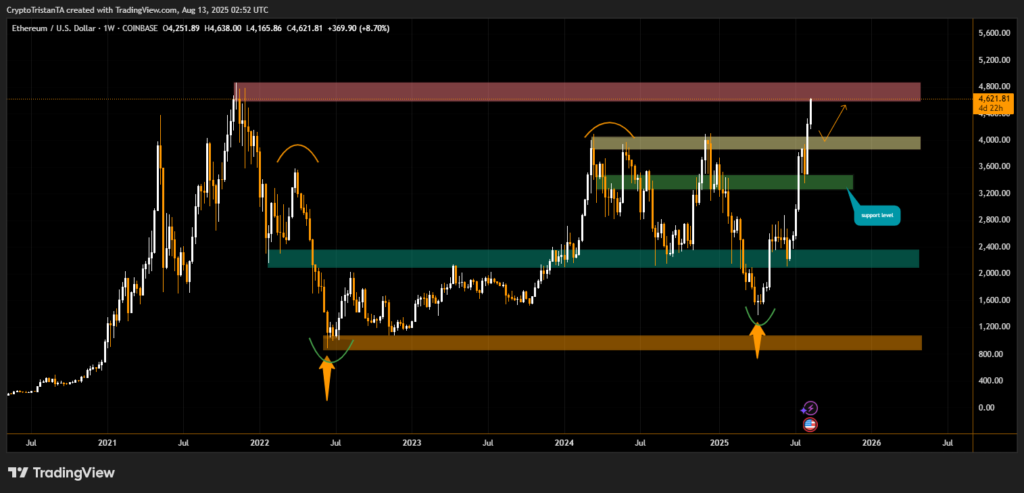Ethereum (ETH) has surged to $4,612, breaking through major resistance levels and positioning itself near a critical long-term price zone. The rally follows strong buying momentum and increasing institutional interest, with traders eyeing the $4,800–$5,000 range as the next test.

On the weekly timeframe, Ethereum has decisively moved above the $4,000–$4,200 resistance band, an area that had rejected price advances multiple times since late 2021. This breakout comes after a powerful reversal from the $1,050–$1,200 demand zone, where ETH established a higher low compared to its 2022 cycle bottom.
The chart shows a clear inverse head-and-shoulders formation, signaling a potential trend continuation toward all-time highs. Volume has picked up significantly during this move, adding confidence to the bullish breakout.
Analysts highlight the $4,800–$5,000 region as the primary long-term resistance, corresponding with Ethereum’s previous peak. A successful breakout here could open the door for price discovery and potentially set new highs.
Support now sits firmly at $3,200–$3,400, with additional safety levels around $2,400 in the event of a deeper correction.
Ethereum’s rally is supported by growing institutional demand, robust on-chain activity, and macroeconomic optimism ahead of potential Federal Reserve rate cuts. Staking participation has also increased, reducing liquid supply and amplifying upward pressure on price.
“The combination of macro tailwinds, ETF inflows, and technical breakout patterns is attracting both retail and institutional buyers at scale,” BITX analyst noted.
Ethereum’s climb to $4,612 marks a pivotal moment in its market structure, with bulls now targeting the final resistance barrier before new all-time highs. If momentum holds, the coming weeks could see ETH testing — and potentially surpassing — the $5,000 milestone.
Disclaimer
This content is for informational purposes only and does not constitute financial, investment, or legal advice. Cryptocurrency trading involves risk and may result in financial loss.
